Opioid Prevention
The nationwide opioid epidemic started in the 1990s with increased opioid prescribing and opioid overdose deaths. Heroin and other synthetic opioids, such as fentanyl, led to further increases beginning in 2010 (CDC – Understanding the Epidemic). From 2010 to 2020, the total number of opioid-related overdose deaths in Georgia increased by 207%. In October 2017, HHS declared the opioid crisis a national public health emergency. In 2020, 67% of drug overdose deaths in Georgia were related to opioids—1,309 total.

The Georgia Department of Public Health (DPH) is working to combat the opioid epidemic through the following programs:
- Opioid and Substance Misuse Response: The program is responsible for leading statewide strategic planning efforts to respond to the opioid epidemic and other emerging substance misuse.
- Prescription Drug Monitoring Program (PDMP): The Georgia PDMP is an electronic database used to monitor the prescribing and dispensing of controlled substances. The PDMP provides prescribers and pharmacists with critical information regarding a patient’s controlled substance prescription history. It can help eliminate duplicative prescribing and overprescribing of controlled substances and protect patients at risk of misuse.
- Drug Surveillance Unit: The Drug Surveillance Unit monitors overdose trends in Georgia and provides drug surveillance data to the public and to partners working to end the opioid epidemic. This data is also used to detect and respond to rapid increases, or clusters, of overdoses, such as the Counterfeit Percocet-Related Overdose Cluster in Macon during June 2017.
Mission: To implement a sustainable, collaborative and multi-disciplinary approach in response to Georgia’s opioid and substance misuse crisis.
Vision: To improve access to state and local data; to recommend and/or implement education best practices; and to promote the use of law enforcement, healthcare and public health resources to prevent the misuse of opioids and other substances in Georgia.
Local Resources
Naloxone/Narcan Facts
- Naloxone or “Narcan” is an FDA-approved opioid antagonist that counteracts/reverses the effects of an opioid overdose. Naloxone reverses overdose symptoms including but not limited to extreme drowsiness, slowed breathing, and loss of consciousness.
- Fentanyl
- Heroin
- Morphine
- Pain pills (OxyContin, Vicodin, Percocet, etc.)
- Methadone
- Other illicit drugs that have been contaminated/laced with fentanyl (cocaine, meth, counterfeit pills, etc.)

- Many opioids remain in the body longer, and some opioids are stronger than others, requiring multiple doses of naloxone. Because of this, it is possible for a person to still experience the effects of an overdose after a dose of naloxone wears off. One of the most important steps to take is to call 911 so the individual can receive immediate medical attention.
- Effective for 30-90 min.
- Additional dose(s) every 2 min. if no response
- No harmful effects if no opiates/opioids on board
- Not addictive
- Does not get you “high”
- Can be used past “expiration” date
- According to GA Overdose Prevention & other research, up to 28 years
- Temperature resistant
- Available @ pharmacies WITHOUT a prescription!
How to use Narcan/Naloxone
- PEEL back the package to remove the device.
- HOLD the Narcan nasal spray with your thumb on the plunger and your index and middle fingers on either side of the nozzle.
- TILT the patient’s head back, supporting the neck with your hand.
- PLACE the tip of the nozzle in either nostril until your fingers touch the bottom of the patient’s nose.
- PRESS the plunger firmly to release the dose into the patient’s nose.
Video demonstration on how to use Narcan nasal spray: https://vimeo.com/151191919
Where to get Narcan/Naloxone
- You can go to a pharmacy and purchase Naloxone without a prescription. Cost will vary by pharmacy.
- Naloxone is available at a discounted public interest price if purchased directly through the biopharmaceutical agency Emergent. The cost is $47.50 per box versus the more expensive cost at retail pharmacies. Contact info for this route is:
Name: Rob Jacobson, Director of Community Health Services
Cell: 813-297-2538
Email: jacobsonr@ebsi.com
- Those considered “high-risk,” (people who are actively using drugs, a family member of someone actively using) can receive a free Naloxone kit from GA Overdose Prevention. https://georgiaoverdoseprevention.org/request-naloxone-kit/
- Those considered first responders (law enforcement, fire, etc.) can do a training through the Department of Behavioral Health and Developmental Disabilities (DBHDD) and receive free Naloxone. https://opioidresponse.info/get-involved/#first-responder-training
Naloxone Standing Order
Issued by DPH Commissioner Kathleen Toomey. Naloxone is available and can be purchased from any pharmacy, without a prescription, for all residents of the state of Georgia to ensure that family members, friends, co-workers, first responders, schools, harm reduction organizations to provide assistance to a person experiencing an opioid-related overdose.
Naloxone blocks or reverses the effects of opioids, including extreme drowsiness, slowed breathing or loss of consciousness. Naloxone is used to treat an opioid-related overdose emergency. It should be used until the patient can receive emergency medical care for an overdose. Overdoses may require multiple doses of Naloxone, and 911 should be called immediately even if the individual comes to. An individual can go back into an overdose once Naloxone wears off if there are high doses of opioids on board.
If you are considered high risk, you can fill out a form on https://georgiaoverdoseprevention.org/request-naloxone-kit/ to get a free naloxone kit while supplies last. High risk includes the following: actively using street or prescription opioids and any other street drug, in recovery from opioids or any street drug, a sex worker, have a lowered tolerance to opioids from a period of not using drugs, on medication assisted treatment (MAT), or a loved one of a person at risk.
Georgia’s 911 Medical Amnesty Law

Any person who in good faith seeks medical assistance for a person experiencing or believed to be experiencing a drug overdose shall not be arrested, charged, or prosecuted for a drug violation if the evidence for the arrest, charge, or prosecution of such drug violation resulted solely from seeking such medical assistance. Any person who is experiencing a drug overdose and, in good faith, seeks medical assistance for himself or herself or is the subject of such a request shall not be arrested, charged, or prosecuted for a drug violation if the evidence for the arrest, charge, or prosecution of such drug violation resulted solely from seeking such medical assistance.
- Although most overdoses occur in the presence of others, fear of arrest and prosecution prevent many people from calling 911.
- Georgia’s Medical Amnesty Law protects victims and callers seeking medical assistance at drug or alcohol overdose scenes.
- Limited liability for possession of small amounts of drugs and/or alcohol- this applies to the victim as well as the caller.
- Limited liability for breaches of parole, restraining order, probation and other violations.
- Naloxone immunity for prescribers, pharmacists and first responders.
Prescription Opioids – Safety Protocol
- Never take more than the prescribed dose.
- If you miss a dose, do not double dose to catch up.
- Do not combine opioids with alcohol.
- Do not combine opioids with other medications or drugs unless your doctor has said it is safe to do so.
- Stop taking opioid medications as soon as your doctor agrees they are no longer needed.
- Always follow the prescribed directions.
- When taking liquid doses, use an accurate measuring device and measure out only the prescribed amount.
- Use the medication only in the form in which it was prescribed.
- Never use another person’s prescription or share your prescription with others.
- Do not drive a car or operate heavy machinery.
MORE INFORMATION: Opioid Safety Fact Sheet
Proper Drug Disposal

If you received specific disposal instructions from your healthcare provider (e.g., doctor, pharmacist) for your unused or expired medicine, you should follow those instructions to dispose of your medicine. The best disposal option is to find a drug take back location, which may be found in retail, hospital, or clinic pharmacies; and/or law enforcement facilities.
Drug Disposal Locations in South Health District
Disposal of Unused Medicines: What You Should Know
Drug Disposal: FDA’s Flush List for Certain Medicines
Where and How to Dispose of Unused Medicines
Visit DEATakeBack.com for more information.
Deterra Drug Deactivation and Disposal System
The purpose behind the Deterra Drug Deactivation and Disposal System is to safely dispose of unused or expired medications as well as illicit drugs. These individual pouches are plant-based, safe for the environment, and they will destroy prescription drugs in the following preparations:
- Pills
- Liquids
- Powders
- Patches
- Films
Deterra will also destroy illicit drugs such as:
- Meth
- Cocaine
- Heroin
- Ecstasy
- LSD
- THC gummies
- THC vape liquid
- Nicotine vape liquid
Deterra pouches render these medications and drugs inert and unavailable for misuse or retrieval.
The medium size Deterra pouches will destroy:
- 45 pills or films
- 6 oz of liquid
- 6 patches
- 15 THC gummies
- 0.4 oz THC vape liquid
- 11 grams of illicit drugs mentioned above
- 6 oz of Nicotine vape liquid
The large size Deterra pouches will destroy:
- 90 pills or films
- 12 oz of liquid
- 12 patches
- 30 THC gummies
- 0.8 oz THC vape liquid
- 22 grams of illicit drugs mentioned above
- 12 oz of Nicotine vape liquid
*Deterra pouches will NOT destroy leaf marijuana or other THC edibles such as cookies and chocolates.
Instructions for use are below but are located on the back of the pouch as well as in a flyer I have stapled to the kits.
- Tear open pouch and place medications/drugs inside.
- Fill pouch halfway with warm water and wait 30 seconds for air to release. Some foaming may occur.
- Seal pouch tightly, gently shake, and dispose in normal trash.
*To destroy transdermal patches, attack sticky side of patch to a Kleenex/tissue and insert into Deterra pouch.
Video on how to dispose of pills, liquids, creams, and films: https://youtu.be/V1RxmAMWKOU
Video on how to dispose of patches: https://youtu.be/tepMIUN0IZY
Overdose Education Videos
Stop Overdose: Fentanyl Video- https://youtu.be/8wyCzC4CWAM
Stop Overdose: Naloxone Video- https://youtu.be/TRnA9fDg670
Stop Overdose: Polysubstance Video- https://youtu.be/CRhpjbh3Otg
Signs and Symptoms of Opioid Overdose

- Unresponsiveness
- Awake, but unable to talk
- Limp posture
- Pale or clammy skin
- Blue fingernails and lips
- For lighter skinned people, the skin tone turns bluish purple; for darker skinned people, the skin tone turns grayish or ashen
- Slow, shallow, erratic breathing or not breathing
- Slow, erratic pulse or no pulse
- Choking sounds or a snore-like gurgling noise
Opioid Overdose: What to Do
- Call 911 immediately, report a drug overdose, and give the street address and location of the victim.
- Try to rouse the victim by speaking loudly, pinching, or rubbing your knuckles vigorously up and down the sternum.
- Make sure the victim is breathing. If not, administer rescue breathing (mouth-to-mouth) by pinching the victim’s nose shut and blowing into the mouth. Lay the victim on their side after they have resumed breathing on their own.
- Administer an opioid antagonist, such as Naloxone, if you have it and know how to use it. Naloxone can be obtained from any pharmacy without a prescription per DPH Commissioner Kathleen Toomey (Naloxone Standing Order).
- Stay with the victim until help arrives. Encourage the victim to cooperate with the ambulance crew.
Harm Reduction
People who use illicit drugs can take measures to reduce the risk of overdose, such as having naloxone on hand and never using alone.
Beyond the risk of overdosing, injection drug use can cause people to contract or transmit infectious diseases, such as HIV or Hepatitis. To reduce this risk, people who inject drugs should always use safe injection practices, including never sharing needles and always sterilizing injection sites.
Fentanyl
Fentanyl is an extremely powerful synthetic opioid, 50 – 100 times more potent than morphine. Synthetic opioids are created in labs by scientists for the purpose of treating severe pain (e.g. cancer pain). Now, synthetic opioids such as fentanyl are being illicitly manufactured by individuals for the purpose of selling in the illegal drug market. Fentanyl is a very dangerous drug and can result in a fatal overdose in the blink of an eye. Many individuals who choose to use illicit drugs are putting themselves at risk for death, as fentanyl has been found to lace many other drugs, including heroin, cocaine, methamphetamines, and counterfeit pills on the street that are falsely advertised and sold as prescription.
- As little as 1-2 grains of salt worth can cause a fatal overdose
- Illicit fentanyl primarily manufactured in Mexico with China suppling chemicals
- Symptoms of fentanyl overdose include but are not limited to:
- Unconsciousness, sedation, and/or stupor
- Slowing or cessation of breathing
- Slowing or cessation of pulse
- Constriction of pupils
- Vomiting
- Cold, clammy skin
- Blue discoloration of skin

DEA Update – Counterfeit Pills
“DEA Issues Public Safety Alert on Sharp Increase in Fake Prescription Pills Containing Fentanyl and Meth” – Sept. 27, 2021
- Criminal drug networks mass-producing fake pills and selling as legitimate prescription pills, including but not limited to:
- oxycodone (Oxycontin®, Percocet®)
- hydrocodone (Vicodin®)
- alprazolam (Xanax®)
- amphetamines (Adderall®)
- DEA-seized counterfeit pills with fentanyl has jumped nearly 430 percent since 2019. DEA lab testing reveals 2 out of every 5 pills with fentanyl contain a potentially lethal dose.
- The only safe medications are ones prescribed by a trusted medical professional and dispensed by a licensed pharmacist.
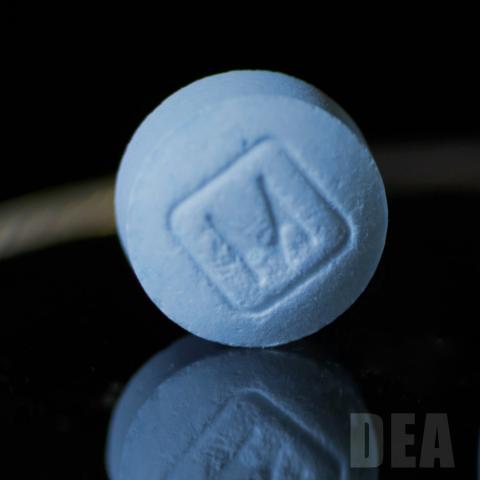

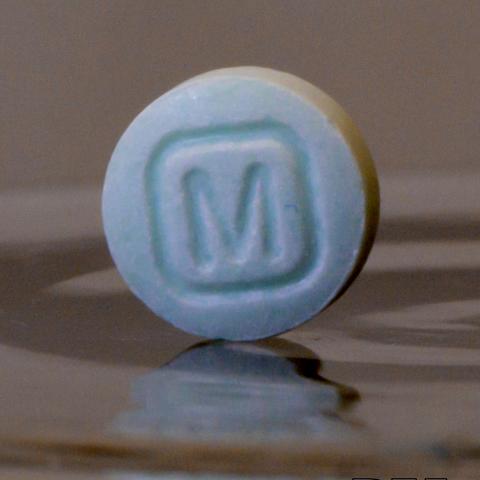
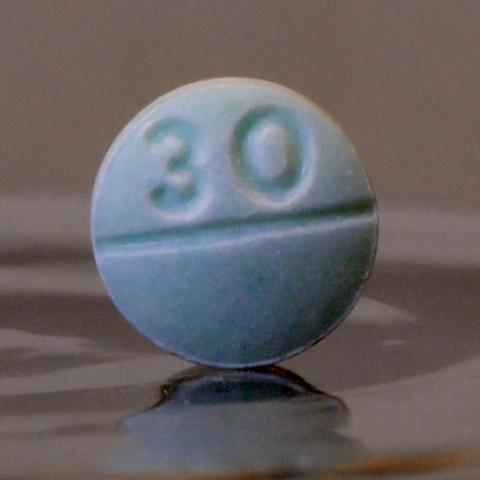


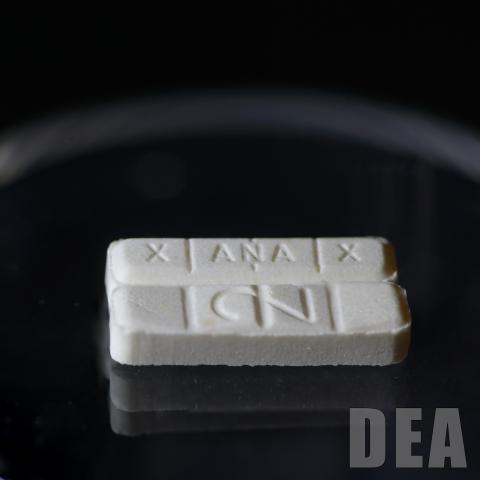
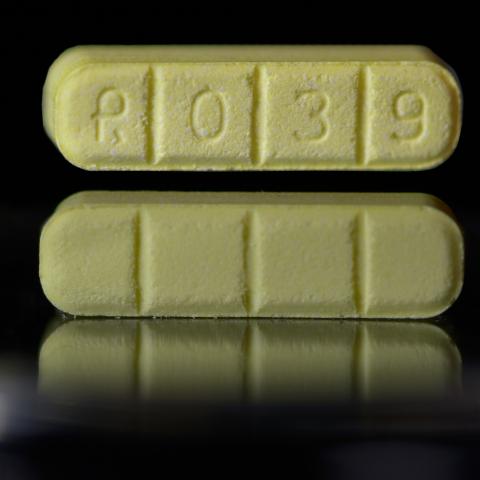

Important Links:
DEA Issues Public Safety Alert on Sharp Increase in Fake Prescription Pills Containing Fentanyl and Meth –https://www.dea.gov/press-releases/2021/09/27/dea-issues-public-safety-alert
One Pill Can Kill – https://www.dea.gov/onepill
Fentanyl – https://www.cdc.gov/opioids/basics/fentanyl.html
Current Harm Reduction Programs in GA (including syringe exchange services)
Atlanta Harm Reduction Coalition (Atlanta, GA)
1231 Joseph E. Boone Blvd. NW
Atlanta, GA 30314
404-817-9994
https://atlantaharmreduction.org/
Email: ahrcemail@ahrc-atl.org

Services offered:
- C3 (Connect to Care Clinic)
- PrEP (HIV pre-exposure prophylaxis)
- Prevention
- HIV, Hep C, STI testing
- Condom distribution
- Syringe services program
- Direct client services
- Rapid Re-housing program
- Linkage to care
- Medication assisted treatment (MAT)
- Harm reduction counseling
- Mothers on the Move program
- Keeping Individual Sex Workers Safe (K.I.S.S.)
- Healthy meal initiative
- Legal aid
- Job readiness
Aniz, Inc (Atlanta, GA)
Garnett Station Place Suite #300
236 Forsyth Street, SW
Atlanta, GA 30303
404-521-2410
Email: atom-quinn@aniz.org

Services offered:
- HIV/Hep C testing
- Substance use counseling
- Emotional and physical wellness case management
- Behavioral health
- HIV/AIDS education
- E4U (Especially for you) “by-request only” private & confidential screening service
- Peer support
- HIV support groups
- Clean syringe access and disposal
- Reproductive health education
- Mental health support groups
- Hygiene products access
- Sexual health education
Access Point of GA (Athens, GA)
706-372-2031
https://www.accesspointga.org/
Email: accesspointgeorgia@gmail.com

Services offered:
- HIV/Hep C testing
- Substance use counseling
- Emotional and physical wellness case management
- Behavioral health
- HIV/AIDS education
- E4U (Especially for you) “by-request only” private & confidential screening service
- Peer support
- HIV support groups
- Clean syringe access and disposal
- Reproductive health education
- Mental health support groups
- Hygiene products access
- Sexual health education
- Syringe access and exchange in addition to other necessary supplies
- Naloxone/Narcan kits
- Fentanyl test strips
- Condoms and more
- Peer support
- Advocacy
- Referrals
- Crisis stabilization
- Inpatient treatment
- Sober living
- Opioid treatment programs
Neonatal Abstinence Syndrome
Neonatal Abstinence Syndrome (NAS) is a drug withdrawal syndrome that results from the sudden discontinuation of drugs used by the mother during pregnancy.
NAS most often is caused when a woman takes opioids (e.g. morphine, methadone, oxycodone) during pregnancy, but can also occur with antidepressants and benzodiazepines. It also can occur when a woman is using illegal drugs, such as heroin, methamphetamines, and barbiturates.
Other Resources
CDC Prevent Addiction Fact Sheet
CDC Treatment and Recovery Fact Sheet
Important/Informative Links
- https://dph.georgia.gov/stopopioidaddiction
- https://www.georgiacollaborative.com/providers/georgia-crisis-and-access-line-gcal/
- https://findtreatment.gov/
- https://dbhdd.georgia.gov/be-supported/help-substance-abuse
- https://georgiaoverdoseprevention.org/
- https://doseofrealityga.org/
- https://atlantaharmreduction.org/
- https://addictions.com
For more information or for health education requests, please see contact info below:
Jen Wingertsahn, MPH, Opioid Prevention Specialist
Mobile: 229-300-0454




